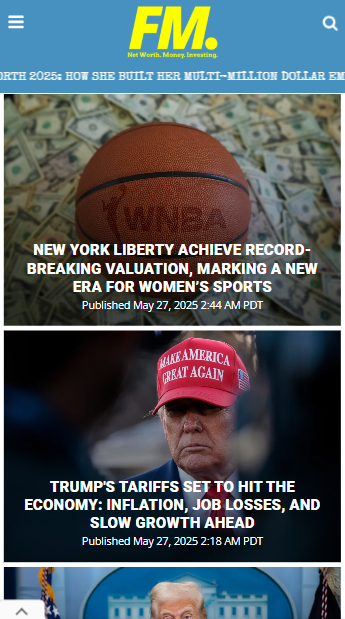Top 10 Must-Watch Movies Between Christmas and New Year 2025 – Ultimate Streaming and Cinema Picks for Festive Relaxation

25th Dec 2025
The holiday season in 2025 brings fresh opportunities to unwind with films that mix timeless appeal, high-energy action, and brand-new releases tailored for those quiet days after Christmas gifts are unwrapped. Families and friends often gather around screens during this transitional week, seeking stories that evoke warmth, spark laughter, or deliver thrilling escapes while the New Year's countdown builds anticipation. This year's lineup includes updated classics on popular streaming services alongside blockbuster cinema options hitting theaters right now, ensuring everyone finds something to enjoy amid the lingering festive glow.
Iconic scene from Home Alone: Kevin McCallister reacts hilariously to aftershave, showcasing Macaulay Culkin’s unforgettable comedic talent.
The Top 10 Movies for Your 2025 Holiday Downtime
Home Alone (1990) – Iconic Family Comedy for Cozy Evenings
Home Alone continues to captivate audiences in 2025 with its blend of clever traps, holiday mishaps, and heartfelt family reunions, making it an essential rewatch for anyone craving nostalgic comfort after the Christmas rush. Kevin's clever defense against burglars offers endless laughs and subtle lessons on independence, all wrapped in a snowy Chicago setting that feels perfectly timed for late December viewing. Available on Disney+, this film pairs wonderfully with hot cocoa and blankets, helping extend the holiday spirit into the new year without overwhelming the senses.
Elf (2003) – Uplifting Humor to Keep the Joy Alive
Will Ferrell's enthusiastic portrayal of Buddy the Elf brings pure delight through his wide-eyed wonder and hilarious fish-out-of-water antics in New York City, creating a movie that radiates positivity and reminds viewers of the simple pleasures in holiday traditions. In 2025, its messages of kindness and belonging resonate even more amid current cultural shifts toward inclusivity. Streaming on Max, Elf serves as a lighthearted bridge between Christmas feasts and New Year's resolutions, ideal for group watches that leave everyone smiling and quoting lines long after the credits roll.
The Holiday (2006) – Romantic Tales for Reflective Moments
This charming story of two women swapping homes and discovering unexpected romance during winter captures the essence of self-discovery and connection, with standout performances from Kate Winslet and Cameron Diaz adding depth to its cozy narrative. As 2025 brings renewed focus on personal growth post-pandemic, the film's themes feel freshly relevant. Now on Netflix, it provides a soothing escape for solo viewers or couples, blending gentle humor with emotional warmth to ease the transition from holiday busyness to quieter introspection.
Wake Up Dead Man: A Knives Out Mystery (2025) – Fresh Mystery Thrills on Streaming
Daniel Craig returns as detective Benoit Blanc in this latest installment, unraveling a complex whodunit filled with twists, eccentric characters, and sharp wit that keeps audiences guessing until the end. Released just in time for December 2025, it adds a layer of intrigue to holiday viewing with its timely commentary on wealth and deception. Available on Netflix starting December 12, this film offers intellectual stimulation for those seeking something beyond traditional festive fare, perfect for evenings when you want engagement without high-stakes action.
F1 (2025) – High-Octane Racing Drama for Adrenaline Seekers
Brad Pitt stars in this gripping tale of Formula 1 racing, showcasing intense rivalries, stunning visuals of high-speed chases, and behind-the-scenes drama that highlights the sport's global appeal in today's fast-paced world. As motorsport gains popularity in 2025 with new tech advancements, the movie feels cutting-edge. Streaming on Apple TV+, it delivers excitement for fans of real-life thrills, making it a strong choice for breaking up relaxed downtime with moments of pure cinematic intensity.
Avatar: Fire and Ash (2025) – Epic Cinema Adventure in Theaters
James Cameron's latest Pandora saga explores deeper conflicts with fiery elements, breathtaking visuals, and emotional stakes involving family and survival, building on the franchise's legacy of immersive storytelling. Hitting cinemas in December 2025, it coincides with renewed interest in sci-fi epics amid environmental discussions. This big-screen experience encourages theater outings, providing a shared spectacle that contrasts beautifully with at-home streaming sessions and leaves viewers inspired by its grand scale.
Anaconda (2025) – Adventurous Remake for Fun Escapes
Jack Black and Paul Rudd lead this updated thriller about a giant snake hunt in the Amazon, blending humor, suspense, and over-the-top action that pays homage to the original while adding modern twists. With 2025's emphasis on reboots, it brings fresh energy to familiar tropes. In theaters now, Anaconda suits groups looking for light-hearted scares, offering a playful diversion during the week when holiday fatigue sets in and everyone needs a dose of exaggerated excitement.
The SpongeBob Movie: Search for SquarePants (2025) – Animated Family Delight
SpongeBob embarks on a hilarious quest filled with quirky characters, catchy songs, and underwater absurdity, appealing to kids and adults alike with its clever writing and vibrant animation. As family entertainment evolves in 2025, this release stands out for its inclusive humor. Playing in cinemas, it provides a cheerful option for multigenerational gatherings, ensuring laughter echoes through the house and creates memorable moments before the new year begins.
A Merry Little Ex-Mas (2025) – New Holiday Rom-Com on Streaming
Alicia Silverstone shines in this contemporary story of exes reuniting during Christmas, weaving romance, comedy, and heartfelt revelations that explore second chances in a relatable way. Part of Netflix's 2025 holiday slate, it reflects current trends in feel-good narratives with diverse casts. Available on Netflix, this film adds a modern twist to seasonal viewing, ideal for those wanting uplifting stories that spark conversations about relationships amid the festive transition period.
Mission: Impossible – The Final Reckoning (2025) – Action-Packed Finale
Tom Cruise concludes the series with daring stunts, global intrigue, and high-stakes missions that push the boundaries of espionage storytelling, delivering a satisfying end to Ethan Hunt's journey. In 2025, as action franchises wrap up, it generates buzz for its innovative sequences. Streaming on Paramount+, this movie energizes downtime sessions, offering thrills that motivate viewers to embrace adventure as they look ahead to personal goals in the coming year.
Buddy the Elf celebrates with pure joy in his iconic green and yellow outfit, capturing the festive spirit of Elf.
Bonus Tips for Enhancing Your 2025 Movie Sessions
Transform your space with soft lighting, comfortable seating, and themed snacks like popcorn mixed with holiday candies to make each viewing feel special and immersive. Alternate between streaming at home for convenience and cinema trips for that larger-than-life vibe, especially with 2025's exciting releases drawing crowds. Pace your marathon by incorporating short walks or discussions after films, which helps maintain energy and deepens appreciation for the stories unfolding on screen.
Embracing the Magic of Festive Films
This period between Christmas and New Year in 2025 stands out as a unique time for reflection and recharge, with movies serving as companions that foster connection, inspire dreams, and provide much-needed escapism after the year's festivities. By selecting a diverse mix from this list, including nostalgic gems and the latest hits, you create experiences that linger beyond the screen, turning ordinary days into highlights filled with shared joy and anticipation for what's next.
More Festive Film Questions Answered
What hidden gem holiday movies from 2025 deserve more attention?
Beyond the big names, films like Oy to the World and Christmas at the Catnip Cafe offer quirky takes on seasonal themes, with the former blending cultural traditions in a heartfelt comedy about family gatherings, and the latter featuring adorable animal antics in a small-town setting that emphasizes community bonds. These under-the-radar picks, available on Hulu and Lifetime respectively, provide fresh perspectives on holiday chaos, encouraging viewers to explore diverse stories that add variety to your lineup and spark unexpected discussions with loved ones, all while keeping the entertainment light and engaging for about 90 minutes each.
Which family-friendly cinema options in December 2025 combine fun and learning?
The SpongeBob Movie: Search for SquarePants and KIDZ BOP LIVE: The Concert Movie stand out, as the former teaches lessons on friendship through animated adventures in Bikini Bottom, complete with moral dilemmas solved with humor, while the latter turns popular songs into interactive performances that promote creativity and movement. Both in theaters this month, they cater to younger audiences by blending education with entertainment, helping parents introduce concepts like teamwork and self-expression in a festive context, and often include sing-along elements that make the outing interactive and memorable for the whole family.
How can I discover free or low-cost streaming alternatives for holiday movies this year?
Platforms like Tubi and Pluto TV offer ad-supported access to classics such as It's a Wonderful Life and National Lampoon's Christmas Vacation without subscriptions, while libraries provide free borrowing through apps like Hoopla for titles including The Family Stone. In 2025, checking local streaming deals or using VPNs for regional content can uncover more options, allowing budget-conscious viewers to build extensive playlists that include both old favorites and recent additions, ultimately saving money while maximizing variety and ensuring hours of enjoyment without financial strain during the season.







